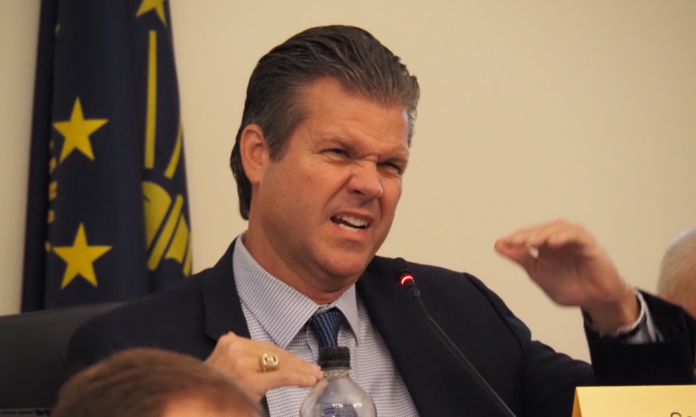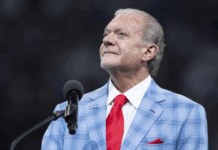
By Leslie Bonilla Muñiz
Indiana Capital Chronicle
INDIANAPOLIS — Indiana’s Department of Transportation (INDOT) expects to lose billions of dollars in revenue in the coming decades as more Hoosiers buy alternative fuel-using and fuel-efficient vehicles. That might mean changes to a popular grant program’s funding mix, and more.
“We already see that we’ve got an issue, and if we don’t do something in the 2025 budget, we will have a cliff,” said Sen. Ryan Mishler, a fiscal leader and chair of an interim committee re-thinking how Indiana funds its roads.
INDOT projects it’ll lose $20 million in revenue in fiscal year 2025. By 2035, it expects to be down by $37 million — in a conservative estimate — or as much as $59 million, according to INDOT’s presentation slides.
By 2040, losses could be between $150 million and $506 million annually. Local units of government would also miss out.
That’s because 82% of both INDOT’s and local units’ state funding comes from taxes on motor fuel. And Hoosiers are expected to spend less on gasoline as they purchase electric and hybrid-electric cars, or — with federal fuel efficiency standards tightening — upgrade to more efficient gas-guzzlers.
The funding drops would be less pronounced if lawmakers keep raising fuel taxes with inflation, according to INDOT. The latest indexing extension expires in two years.
Popular grant program could see changes
Electric and hybrid-electric vehicle supplemental registration fee revenue goes entirely to the Community Crossings Matching Grant Program, not budgets for INDOT and local transportation departments.
The program is popular among smaller communities with limited tax bases.
“Community Crossings allows us to do projects that we couldn’t do (otherwise),” said Montgomery County Commissioner John Frey, representing the Indiana County Commissioners.
But it’s also a source of frustration for larger communities that argue they contribute more road funding than they receive — and are angered by the $1 million annual cap on awards.
“I hope that part of the consideration of this committee … is that there’s an element of equity and fairness,” said Sen. Fady Qaddoura, an Indianapolis Democrat. “… This funding formula does not address those local needs.”
“This is not right. It is not fair. And a million people who live in this region should not be treated like that under this formula,” said Qaddoura, previously Indianapolis’ chief financial officer.
Community Crossings could be a problem for INDOT for a different reason.
Electric and hybrid-electric supplemental registration fees accounted for just 3.5% of the program’s revenue in fiscal year 2023, according to INDOT — but the agency’s expecting that amount to swell to 85% by 2040.
Rep. Jim Pressel, R-Rolling Prairie, told the Capital Chronicle that he expected lawmakers to eventually reroute supplemental registration fees to the road funding formula.
“(But) at what point, I don’t know what’s the right answer to that,” he said. “It is such a small number right now, but it will become impactful.”
Pressel, who leads the House’s roads-focused committee during legislative sessions, said he wanted to “keep Community Crossings alive.” The program’s other funding sources should “stay put.”
Lawmakers also heard suggestions from groups representing counties, cities and towns.
Community Crossing’s call for projects is shorter than bridge development timelines, said Ryan Hoff of the Association of Indiana Counties, so most of the program’s funds are spent on pavement. Counties are responsible for most of the state’s bridges.
Accelerate Indiana Municipalities’ Jenna Bentley said smaller communities have to save for years to make a match for a grant, while larger communities can easily max out but receive paltry sums compared to their funding needs.
Bentley also said those up north face struggle with the program’s two annual calls for projects because of their shorter construction seasons. The demand leads to competition over a limited number of contractors to do the work, she said.
The two-year interim committee made no recommendations.
Mishler said the group gathered information over this first interim, and would put together policy recommendations over the next, ahead of a budget-year legislative session in 2025.
When Pressel suggested the task force examine “the need” next year, Mishler said he wanted to go further: “I want to also go, ‘What is the answer?’”
* * *
The Indiana Capital Chronicle is an independent, nonprofit news organization dedicated to giving Hoosiers a comprehensive look inside state government, policy and elections. The site combines daily coverage with in-depth scrutiny, political awareness and insightful commentary.
You can read the original version of the story here.




